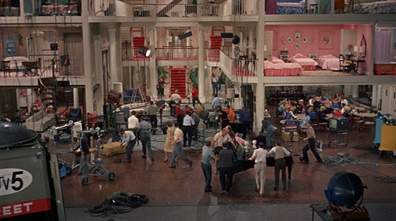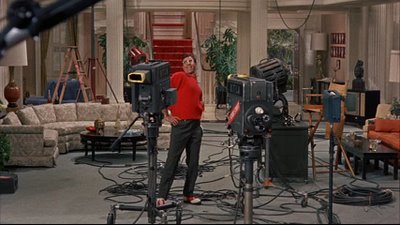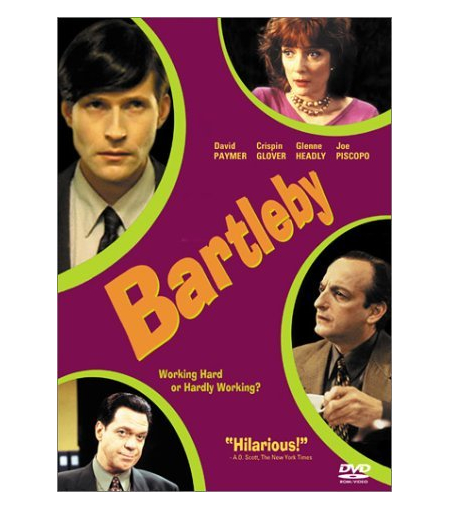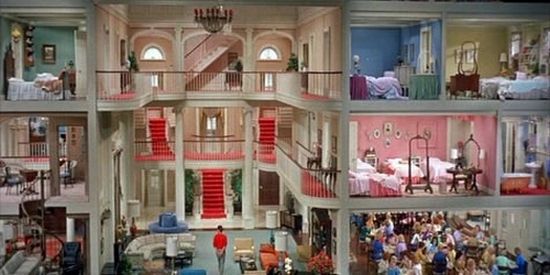From the October 21, 2005 Chicago Reader. — J.R.


Good Night, and Good Luck
** (Worth seeing)
Directed by George Clooney
Written by Clooney and Grant Heslov
With David Straithairn, Clooney, Robert Downey Jr., Patricia Clarkson, Frank Langella, Ray Wise, Heslov, Jeff Daniels, and Dianne Reeves
Capote
*** (A must see)
Directed by Bennett Miller
Written by Dan Futterman
With Philip Seymour Hoffman, Catherine Keener, Clifton Collins Jr., Chris Cooper, Bruce Greenwood, Bob Balaban, Mark Pellegrino, and Amy Ryan
Good Night, and Good Luck and Capote view journalism as an intricate mix of principles, bravado, and negotiation. Working in a minefield, their star journalists are victims of their vocations. Good Night, and Good Luck, set in the early 50s, celebrates Edward R. Murrow’s bravery, eloquence, and sense of justice in challenging Joseph McCarthy at the height of his power — a kind of heroism that evokes John Wayne’s in a western like Rio Bravo (a movie I cherish, though its view of good and evil is similarly unshaded). Good Night, and Good Luck — named for Murrow’s sign-off line — also explores how internal politics at CBS were shaped by the network’s relations with its sponsors. The victimization of Murrow can be seen in his early death from lung cancer — his chain smoking, like James Agee’s and Albert Camus’, was somehow connected in the public mind with his moral seriousness — and in the way his weekly show, See It Now, was bumped to a Sunday-afternoon slot after he challenged McCarthy. Read more
Written for Cinema Narcissus, a collection put together for the Rotterdam International Film Festival in early 1992….One of the regular visitors to this site, Barry Scott Moore, has reminded me that in 2013, Ehsan Khoshbakht pointed out to me that Lewis’s first use of the video assist was actually in The Bellboy, his first feature. (He also drew my attention to several typos, now corrected below.) — J.R

The total film-maker is a man who gives of himself through emulsion, which in turn acts as a mirror. What he gives he gets back. — Jerry Lewis

It was Jerry Lewis who first had the idea of installing a video monitor on a soundstage while shooting a picture. The feature in question was THE LADIES MAN (1961), most of which was shot on a single set, a four-storey, open-faced building that stretched across two soundstages on the Paramount lot. The reason for this video monitor? To allow Lewis to see what a particular camera setup looked like at the same time that he was acting in the shot.
Directing and acting at the same time in comedies is a practice that can be traced back at least as far as the beginning of the 20th century. Read more
From the May 24, 2002 Chicago Reader. — J.R.

Bartleby
** (Woth seeing)
Directed by Jonathan Parker
Written by Parker and Catherine di Napoli
With David Paymer, Crispin Glover, Glenne Headly, Joe Piscopo, Maury Chaykin, and Seymour Cassel.

Jonathan Parker’s first feature adapts Herman Melville’s eerie 1853 novella “Bartleby” (also known as “Bartleby the Scrivener”) with the kind of fidelity to mood and feeling that’s rare among movie adaptations of literary classics. The action has been updated roughly a century and a half, the setting transferred from Wall Street to a building perched on a hilltop over a freeway in an unnamed American location. Characters have been added, significant plot details altered, and a strategic part of the exposition shifted from the end of the tale to near the beginning. Yet the story still has much of the same maddening mystery, conviction, and unsettling comedy that Melville gave it.
The added epilogue is harder to justify and much less successful, and the filmmaking throughout, starting with the early use of slow motion, is needlessly fussy and self-conscious. But these are forgivable flaws in a first feature, one that updates Melville’s story and conception without betraying it.
The nameless narrator of the original is a lawyer on the verge of retirement looking back on the events he describes from a distance of many years. Read more







